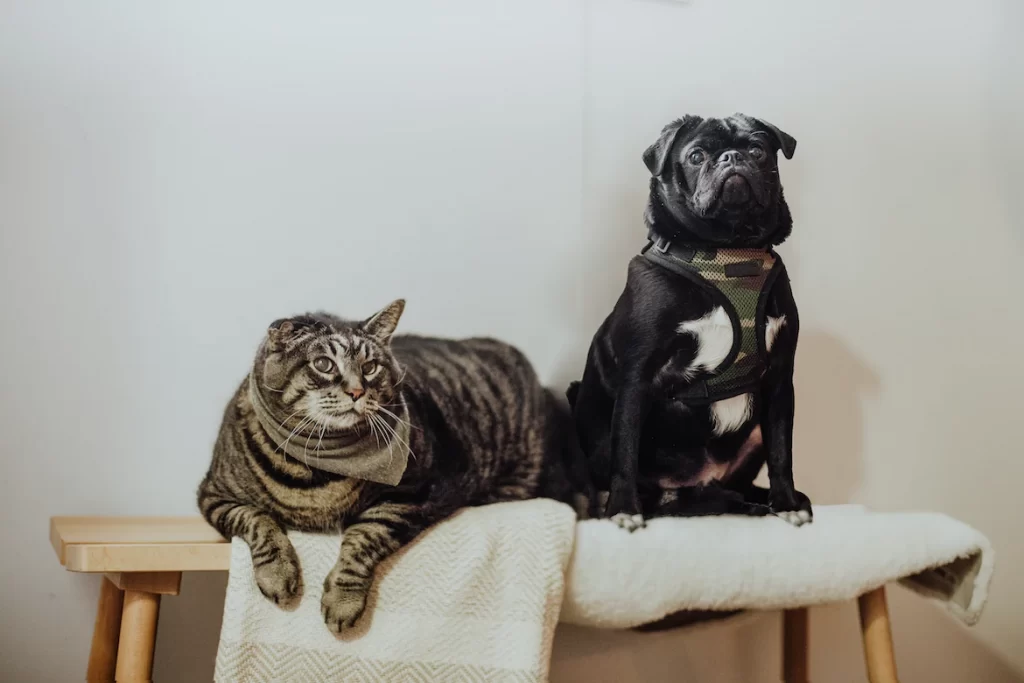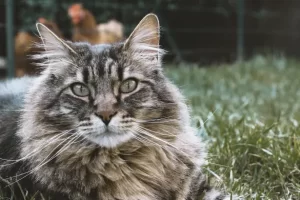Last updated on January 28th, 2023 at 11:42 pm

It’s very uncommon to see cats having a good relationship with dogs. Imagine when you are just taking your dog for a walk. Your dog is acting calm and happy, and then he sees a cat and begins barking and screeching at it. He’s eager to get started. Have you ever thought, why do dogs hate cats so much? Or, do dogs really have such bad feelings about cats?
When two creatures as different as dogs and cats share the same living environment, tensions and confrontations can occur. However, there is a chance that they will form a deep bond and end up becoming great friends. In this article, we examine both cases and determine whether or not dogs dislike cats. Continue reading to learn more.
Why do Dogs Hate Cats?
First of all, it shouldn’t come as a surprise that dogs and cats don’t like each other at all. But you have to understand, Cats and dogs are not enemies. Cats regard dogs and larger animals as predators, causing them to flee the apparent threat. On the other hand, dogs are simply acting on their natural impulses by chasing the moving thing. Now, things start to get interesting when we put a dog and a cat in the same house and force them to interact with each other. It’s not that cats are shy or don’t like other people; they just need more time to get used to a new person or place. Dogs, on the other hand, can quickly sniff around a new place or person to get a sense of what they are like. A dog does this so that he can figure out where he is. On the other hand, a cat will figure out if it is a dangerous situation and try to fight, climb, or get away. The dog thinks that when the cat runs away, it is inviting him to play, so he will keep chasing after it even after it has disappeared. This is usually how it starts, and it may lead to hating each other, cuddling, or just playing.
It is not harmful to have a cat and a dog living together. Sometimes dogs and cats misinterpret each other’s behavior, which can lead to disasters and fights, as well as Tom and Jerry-style excursions in the house. However, if you set suitable boundaries, educate your dog to remain calm in the presence of smaller animals such as cats, and train your dog to obey your directions, you should be able to become friends with these two species.
If you are perplexed as to why dogs hate cats, and why they bark and growl at them, or become very irritated whenever they come into contact with a cat, it does not indicate that dogs hate cats simply due to the fact that cats are cats. There are a few potential factors that could provide light on these procedures.
In the event that this is the case with your canine companion, the following are some of the most common explanations for why dog “hates” cats.
They Communicate in Different Ways
One of the main reasons why dogs and cats don’t like each other is that they talk to each other in very different ways. Dogs talk to each other with their barks and body language, while cats use scent markings and facial expressions to do the same. Because of this, there is a good chance that the two species will get each other wrong.
Your Dog Doesn’t Have Any Experience with Cats in Terms of Socialization
If a dog has never had any kind of interaction with cats during the formative stages of his socialization (between the ages of three weeks and three months), or if he has never gone through a process of becoming accustomed to the presence of cats at any point in his life, then it is highly likely that the dog will have an exaggerated reaction whenever a cat is present. It’s the same concept when a child encountered things for the first time. Sometimes, the dog’s conduct is nothing more than the result of the simple curiosity that he feels for that animal that he is not used to seeing. On the other hand, the majority of the time, it is associated with a feeling of fear and uncertainty in the face of something that is unknown. There are a variety of ways that dogs might show fear; some of them will simply freeze, while others will flee or hide; however, the majority of dogs will either bark, growl, bristle, or even chase the potential threat in an effort to scare it away.
Reasons Related to Territory and Hunting
Have you ever heard that some dog breeds are ideal for hunting? Some work better as security dogs than others. Because they are mostly carnivorous animals and share a common ancestor with the wolf, all dogs, regardless of the breed, have a certain propensity for hunting. A full hunting sequence consists of several behaviors that are always carried out in the same order and that are the search for the objective, the stalking of the same, the pursuit, and, finally, the prey, which refers to the subjection through the bite. These are the behaviors that make up a complete hunting sequence. Throughout the years, certain breeds have been subjected to selective breeding in order to improve and hone their natural instincts. This has resulted in the creation of dogs with heightened senses of smell that are particularly adept at searching and tracking, as well as dogs that display instinctual behaviors of stalking from a young age and sprinting dogs that are able to catch up to a rabbit while it is in the midst of a race. All of these accomplishments were accomplished to cover some or other human interests. If your dog has a propensity for chasing cats, then you should also take into consideration the role that genetics plays in this behavior.
Has an Upsetting Encounter with a Feline Friend
There is also the possibility that your dog has had a negative or upsetting experience while interacting with a cat, which could explain why he appears to be afraid of them. Dogs that are more accustomed to being around cats, as well as dogs that are naturally more inquisitive or daring, have a tendency to have “too much confidence” when it comes to the felines that they encounter. These dogs will frequently approach the felines in an invasive manner in order to sniff them or attempt to play with them. If the cat in question perceives the dog as a threat, it is possible for him to launch an attack on the dog with his claws or fangs, which could result in the dog being injured or terrified. As a result of this, there is a chance that from that point forward, the dog may identify the presence of cats with the unpleasant experience and will begin to react in an unwelcome manner when they are around cats.
How to Stop a Fight Between a Cat and a Dog
It is stressful for pet owners to experience a fight between their pets. You would never want your human child to bite other children on the playground, and you would never want your dog to attack another small fuzzy animal in your home. As a result, it is critical to take some precautions. We don’t want any bloody results to happen, right?
It’s also crucial to remember that, unlike people, dogs aren’t always understanding. Teaching and controlling their hunting instinct can influence their behavior. This does not mean that they will no longer want to chase after the cat. It’s also crucial to understand that chasing cats does not automatically make your dog a bad dog. And that the dog’s age, breed, and the pet owner’s training strategy and persistence in training their dog all contribute to his success in avoiding attacking cats. Here are some suggestions to keep your dog from attacking cats:
- A puppy is easier to socialize with than an adult dog. Older dogs who have already been trained to hunt or behave in this manner around tiny animals may be more difficult to socialize and eliminate.
- Set up boundaries in your home to enable enough space for each pet. You can gradually eliminate certain restrictions and study their behavior as they are more comfortable with each other. Remember, don’t force it.
- Spaying or neutering your dog may aid in reducing prey drive and general hostility.
- Socialize your dog so that he is comfortable with cats, other dogs, and children. This not only raises their sense of comfort but also reduces their uneasiness towards other animals.
- Take your dog for a walk or to the dog park before exposing him to a new cat. He will be less energetic and eager around the cat and will respond to it in a calmer manner as a result.
- When your dog is in the same area as a new cat, always keep an eye on him. If you observe symptoms of tension, speak to your dog calmly and reward him for his calm conduct. Separate them if things continue to deteriorate.
- Dogs require behavioral obedience. Train your dog to obey your commands so that you can regulate their behavior if things go out of hand.
The ideal technique to introduce a cat to a dog is determined by their distinct personalities and characteristics. Some cats will investigate the scene, while others may escape and hide. Likewise, some dogs are more reserved than others. As previously stated, your dog is unlikely to harm the cat, but it will be fascinated by it and want to say hello, which the cat may see as menacing. The simple fact is that if you don’t teach your dog proper cat behavior, the cat will. That lesson usually concludes with a lot of hissing, claw marks, and one unhappy dog!
Conclusion
If you’re still wondering why dogs hate cats, the answer is simple. They don’t hate cats just because they are cats, their hunting instinct as well as experiences created this behavior. Thus, if you own a dog and you want it to be less aggressive when it comes to cats, you should focus on giving them experience. Let them socialize with cats once in a while and train your dogs to obey basic commands. Dogs are intelligent, even though some breeds have higher instincts to hunt, you can still train them to behave and adapt to the new way of life and the importance of socialization. Learning to do so can help you, your dog, and your cat to live peacefully together.


